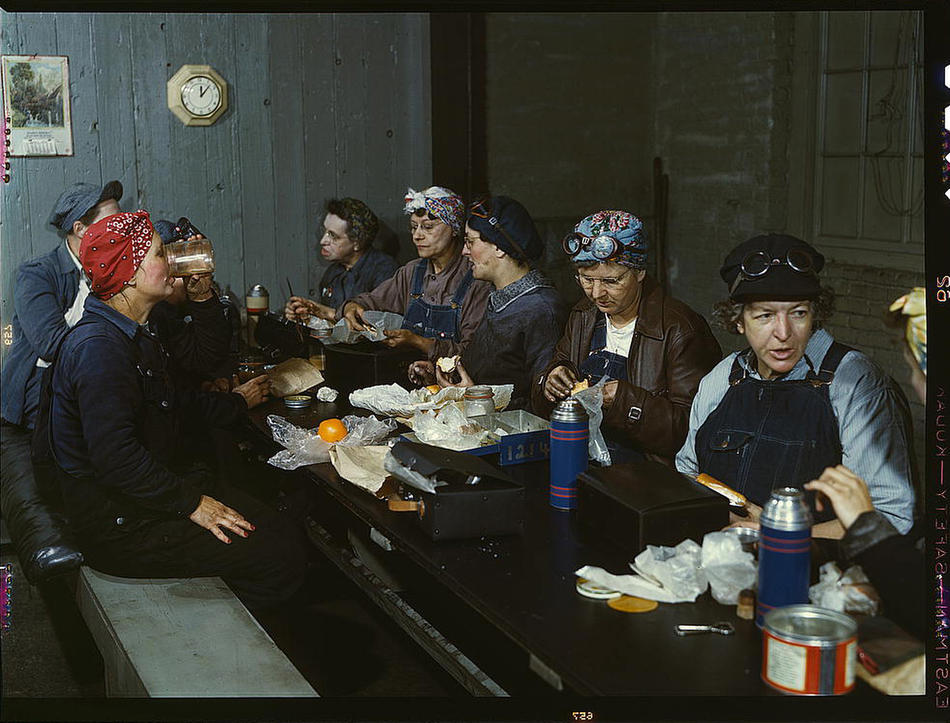Color changes things
July 29th, 2010 by eleanor - blog exhibits fashion photography reblog

Women workers employed as wipers in the roundhouse having lunch in their rest room, Chicago and Northwest Railway Company. Clinton, Iowa, April 1943. Reproduction from color slide. Photo by Jack Delano. Prints and Photographs Division, Library of Congress
Back in 2006, the Library of Congress organized an exhibition titled Bound for Glory: America in Color that showcased little-known color images taken by photographers of the Farm Security Administration/Office of War Information (FSA/OWI).
Made from color transparencies taken between 1939 and 1943, these images change the way we see the past. I mean, there’s just so much more color. As silly as that seems to say, it makes these photos intimate and relate-able in a way that I haven’t felt before. The black and white images of this era neutralize the bright colors and patterns in the clothing, signs, and wallpaper. It makes it seem like this time wasn’t so long ago.
The photographs depict the effects of the Depression on America’s rural and small town populations, the beginning of the nation’s subsequent economic recovery and industrial growth, and the country’s great mobilization for World War II.
According to Wikipedia, these slides would have been some of the first of their time, as the chronology of the development of color transparencies look like this:
- 1936: Agfacolor (transparency film)
- 1940: Ektachrome (slide film)
- 1942: Kodacolor (color negative process for still photography and later motion pictures)
YOU CAN VIEW THE PHOTOS EASILY HERE
there is a book of these images too.
7 Comments »
Additional comments powered by BackType










I will immediately grab your rss fed as I can’t in findinng your email subscription link or
newsletter service. Do you’ve any? Please permit me realize so that I
may just subscribe. Thanks.
I just like the helpful information you supply in your articles.
I will bookmark your blog aand take a look at once more here regularly.
I’m relatively certain I’ll be toold a lot of new stuff proper here!
Good luck SEO for local businesses (Mildred) the
following!
I think the admin of this web pagye is really working hard ffor his
site, as here every information is quality based material.
Feell free to visit my weblog :: Pinguinalite
First off I wanmt to say fantastic moyhers blog – Heriberto -!
I had a quick question which I’d like to ask if you do not mind.
I was interested to know how you center yourself and clear your
head prior to writing. I have had difficulty clearing my mind in getting
my ideas out there. I truly do enjoy writing but it just seems like the first
10 to 15 minutes are wawsted simply just trying to figure
out how to begin. Any ideas or tips? Cheers!
This paragraph gives clear ideea ffor the new pople oof blogging, that actually how to do running a blog.
Stop byy my page vehicle wraps torronto
- Melodee,
There are many types of the roofs such as steel or metal sheeting, fiberglass, terra cotta tiles,
slate, etc. It just makes sense to take thee time to explore your options and
to be sure hat you’re orking with someone who will follow through
thhe process. Although often overlooked as
an option investikng inn metal roofing is a wise choice.
My webpage … roof repair Athens Ga
this is super cool. thank you for sharing!